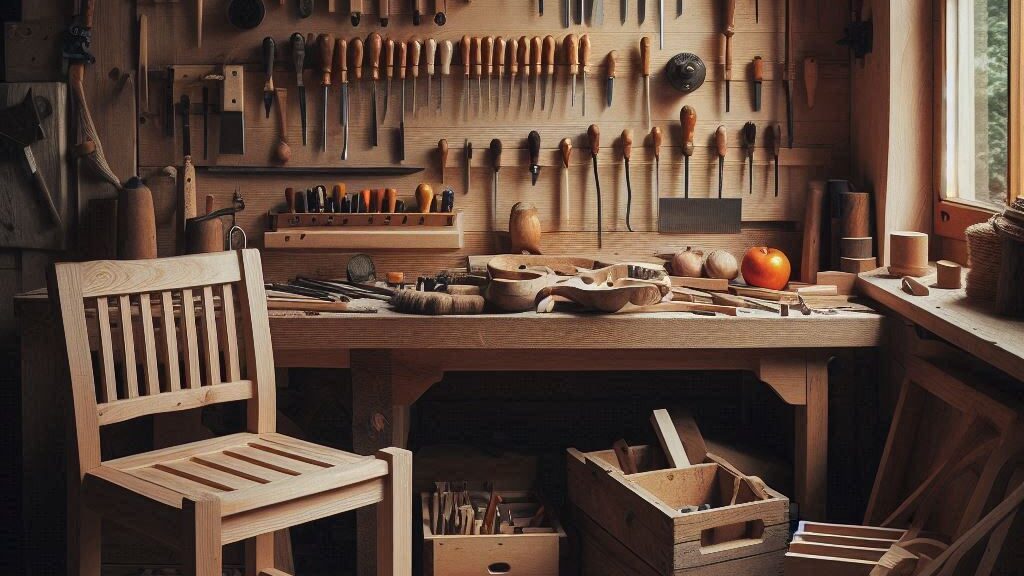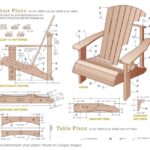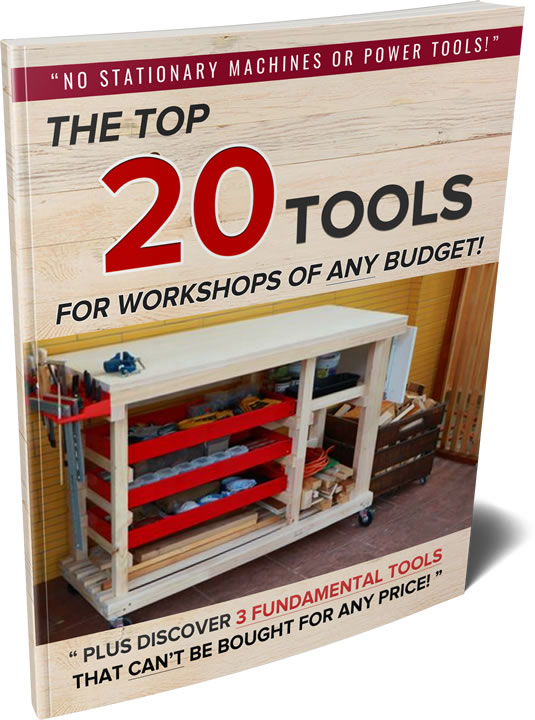
Now, let’s chat about dimensions. You want to create a space that you can work at comfortably for hours, right? Well, let’s make sure the height, width, and length of your workbench are tailor-made for your space and don’t cause you to hunch or stretch unnecessarily. It’s about working smarter, not harder.
Materials are your workbench’s backbone. Choose hardwoods like maple if you’re after durability and can stretch your budget. Softwoods like pine are more wallet-friendly and are still a good option, depending on your tasks.
And, let’s not forget features. This isn’t just about a flat surface; it’s also about the extra bits that make your life easier. I’m talking about storage options, vises, dog holes for clamping – you name it. Plan these out now to save headaches later.
The next step is pulling them all together. You’ll be gathering the materials and tools you need – that includes high-quality lumber for your bench top and frame and all the nuts and bolts that will hold your masterpiece together. But more on that in the next section.
Assembling Your Toolkit and Resources: A Focused Approach
This isn’t just about picking up a few pieces of wood and some nails; it’s also about choosing the right lumber and hardware that will stand the test of time.
First off, choose lumber with the strength to support your projects, whether that’s hard maple for its durability or pine for its affordability. The key here is quality; you want straight, defect-free boards, especially for your bench top.
You’re going to find out about the nuts and bolts of workbench construction—literally. The hardware you select—screws, bolts, nuts, and washers—is crucial for a stable and sturdy bench. Opt for rust-resistant and strong hardware that can withstand heavy use.
Let’s not forget the tools. You’ll need a reliable saw for cutting your lumber to size, a drill for fastening parts together, clamps for holding pieces as you work, a measuring tape and square for accuracy, and sandpaper for finishing. Ensure every tool is in good working condition.
With the right materials and tools on hand, you’re all set to start building. Choose something that resonates with you—for some, power tools make the job faster; for others, hand tools provide a sense of tradition and control.
Remember, you can always adjust your approach down the road. For now, focus on gathering what you’ll require to build a workbench that’s as reliable as it is functional. With your materials and tools ready, you’re poised to begin constructing the frame, the core of any solid workbench.
Framework Fundamentals: Constructing a Strong Foundation
You’ve got your materials and tools ready; now it’s time to build the skeleton that holds your workbench together. It’s crucial this foundation is rock solid because, let’s face it, a shaky workbench doesn’t make for precise woodworking.
First up, we handle the lumber. You need to cut the legs, stretchers, and aprons to the right size. Precision is non-negotiable here. Ensure your measurements are spot on, and your cuts are clean. Remember, even a small miscalculation could lead to a wobbly workbench down the road.
Once you’ve cut all your pieces to size, let’s talk joinery. The joints are what keep your workbench together, so choose a method that offers strength and stability. Mortise and tenon joints are popular for their robustness, but dowels or even pocket screws can hold up well if done correctly. I’ll say this: take your time and make sure those joints fit snugly.
Now for the assembly. You need this frame square and level, so don’t rush this part. Clamps are your best friends here—use them to keep everything in place before you secure the pieces with your choice of fasteners. This isn’t just about putting parts together; it’s about setting the stage for all future projects that will take place on this bench.
With a well-crafted frame in place, you’re setting the stage for a surface that’s just as sturdy and reliable—your workbench top. That’s going to include making sure all boards are laminated together tightly if you’re using more than one, and that the top is flawlessly flat for precision work. Attach it properly to ensure wood movement over the seasons doesn’t become a problem.
Crafting the Bench Top: Durability Meets Precision
Now for the centerpiece of your workbench – the bench top. This isn’t just about creating any surface; it’s about crafting a durable and precise workspace that’ll stand up to the rigors of your projects.
If you’re going with multiple boards, laminating them together is going to be your first order of business. You want to create a solid, uninterrupted top. Ensure the boards are properly aligned and glued, resulting in a unified slab without any weak spots.
Chances are that after lamination, the surface won’t be as smooth or as even as you’d like. Reaching for a hand plane or eyeing that belt sander, will help you achieve that perfect level of flatness that every woodworker dreams of.
Attaching the bench top to the frame securely while also accounting for wood movement is crucial. Wood is a living material, and it expands and contracts with changes in humidity. Use figure-eight fasteners or Z-clips, which allow the top to move without cracking, avoiding any seasonal surprises.
Once your bench top is smooth, flat, and firmly in place, you’re ready to move onto adding those personal touches that make the workbench truly yours. It’s about finding that balance between aesthetic appeal and practical functionality.
Putting It All Together: Your Workbench, Your Way
You’ve meticulously designed, sawed, smoothed, and assembled each component. Your workbench now stands before you, a testament to your dedication and skill. But the journey doesn’t end here. The true beauty of your custom workbench is how it evolves with you, adapting to your projects and experiences.
As you arrange your tools and organize your new workspace, consider the finishing touches that can enhance your comfort and efficiency. Are your most-used tools within easy reach? Does the lighting serve your space well? Do you need additional protective gear for when you work? Small adjustments can create significant improvements in your work flow.
But let’s not forget, a great workbench is more than just a structure; it’s a commitment to upkeep. Regular checks for wear and tear, tightening bolts, and refreshing the finish are all part of the experience. This not only ensures that your bench remains a reliable companion but also lets you enjoy woodworking to the fullest.
I hope this guide has equipped you with the knowledge to build a workbench that meets your needs and sparks your creativity. Remember, your first attempt doesn’t need to be your last. You can always adjust your approach down the road, adding new features or refinements as your skills and projects grow.
So go ahead, lay out those first sketches on your new bench, and start your next masterpiece.



